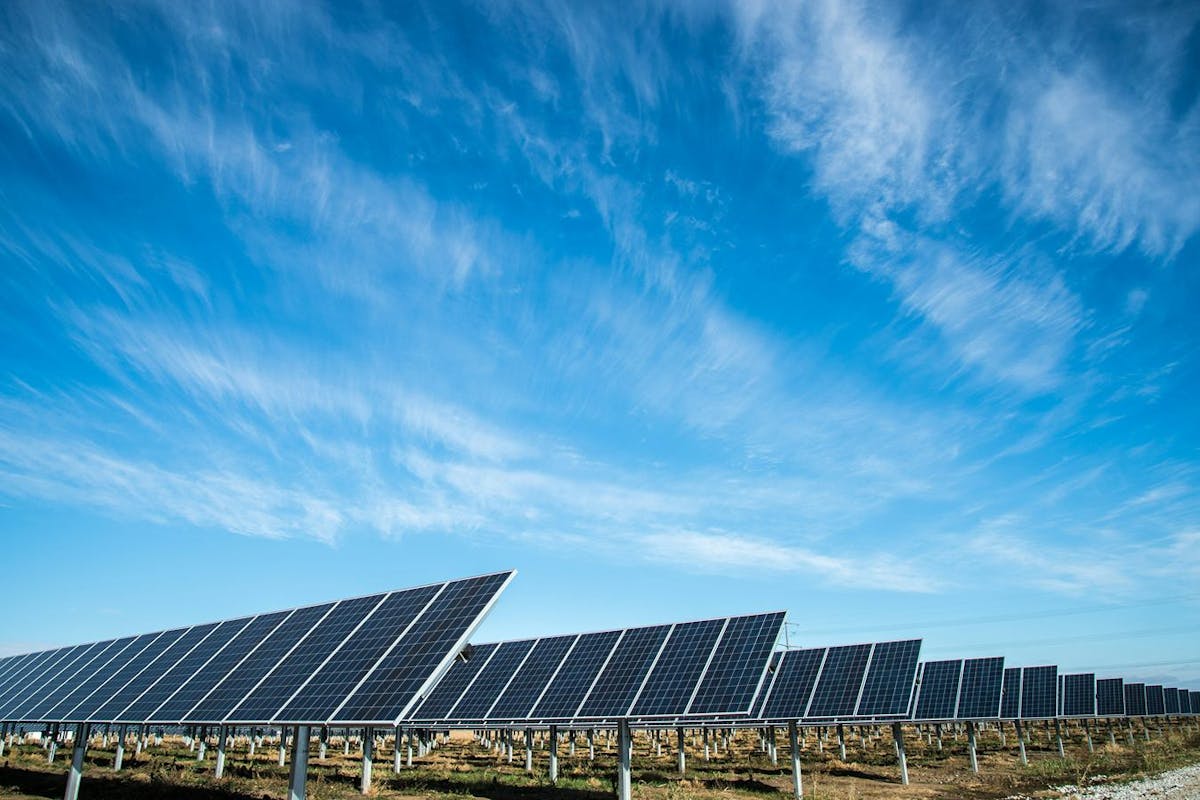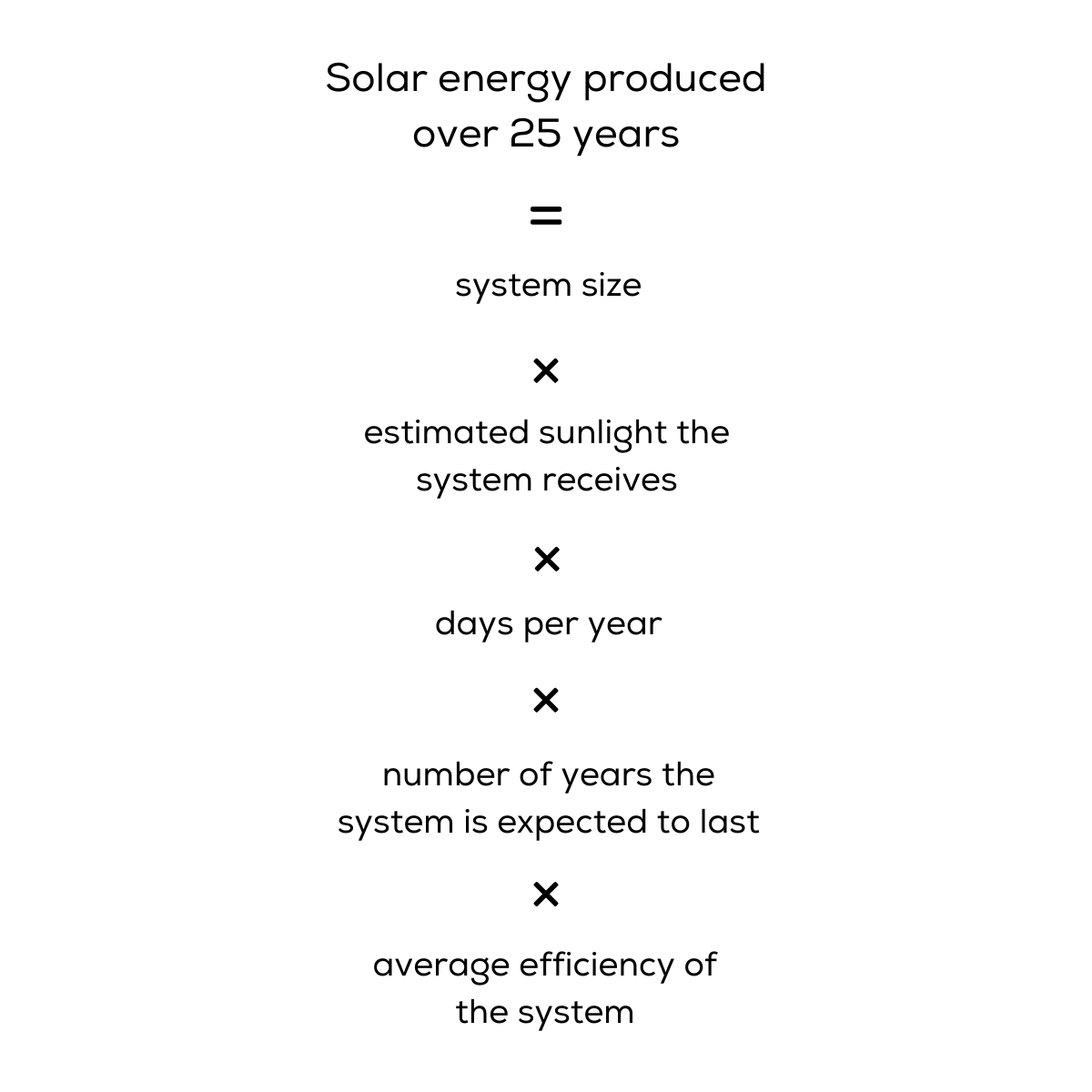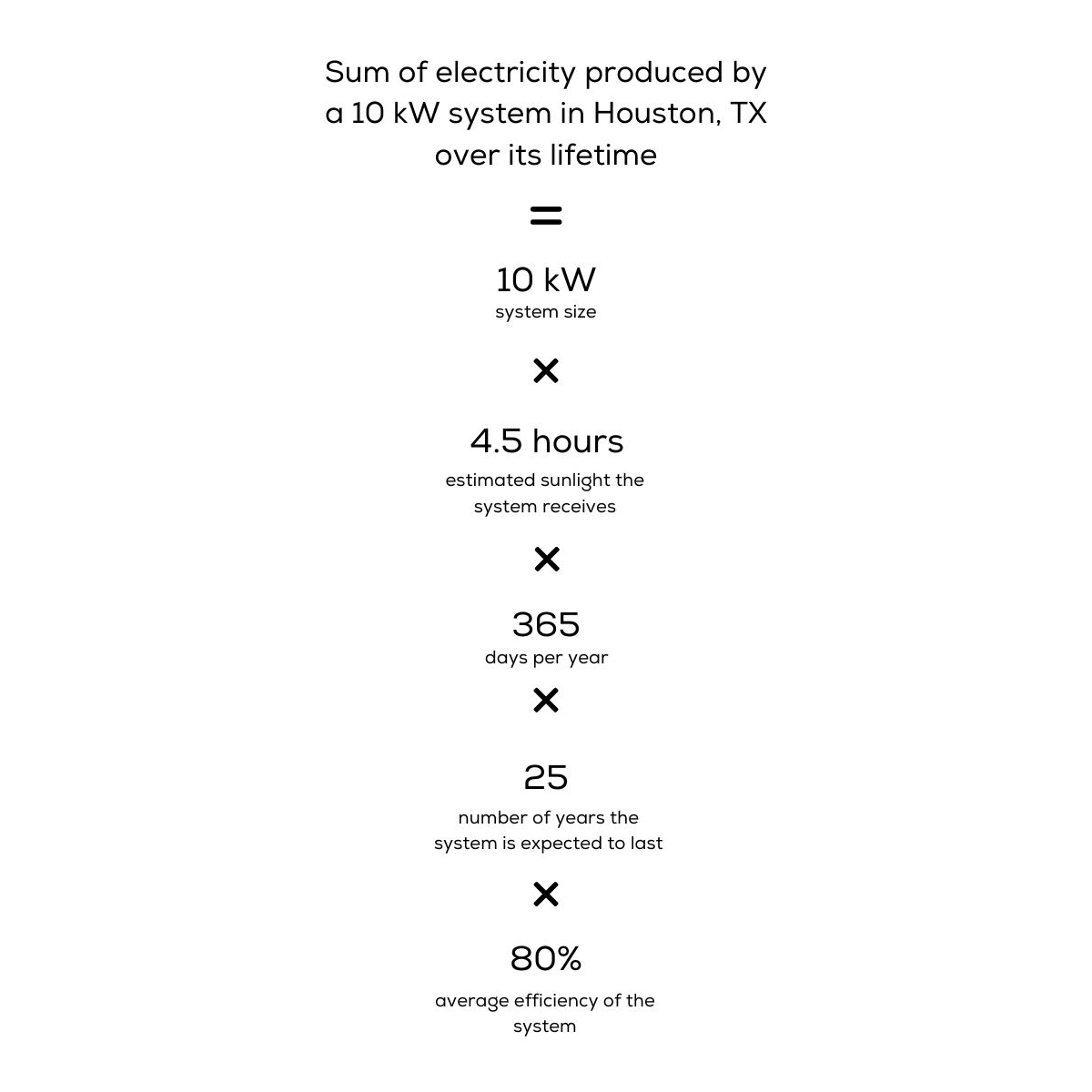Comparing the Cost of Solar: What Do Price Per Watt and Levelized Cost of Energy Mean?
Last edited

Author
Andrew Giermak
Solar and Electrification Writer and Editor

Editor
Andrew Blok
Electrification and Solar Writer and Editor

Solar panels have a host of benefits, but energy bill savings is the big one for most people who adopt home solar panels. Since most solar installations vary in cost, at least slightly, how is one to compare? And, how do you compare the cost of solar electricity to all other sources?
A reputable installer should give you a clear understanding of the costs and your potential savings before you go solar. Here's a look at a few different ways of understanding solar costs.
See how much you can save by going solar with Palmetto
What Is Solar Price Per Watt?
When it comes to solar power, price per watt (PPW) is the price homeowners will pay for every watt of solar panel capacity installed. The price per watt is the net cost (price after incentives) of a solar panel system divided by the total wattage of the system.
Keep in mind solar power capacity is a measurement of the maximum amount of power a system can generate in perfect conditions. A system will not always produce at the maximum capacity because solar production is dependent on the amount and intensity of sun hours received.
Using PPW, a customer can compare solar panel pricing and the value of multiple quotes that may differ in wattage, system size, efficiency, and other factors.
To expand on a few concepts:
- Price per watt is measured in dollars per unit of power ($/W). For instance, the average PPW in the US in the fourth quarter of 2024 was $3.33, according to one estimate from the Solar Energy Industries Association trade group. Other estimates come in much lower.
- Net system cost is the total cost of installing your solar power system after applying any rebates and incentives, including financing costs.
- The size of a solar panel system is typically shown in kilowatts (1kW = 1,000 watts), so multiply that number by 1,000 to get that number in watts (W).
How to Calculate Solar Panel Price Per Watt
To calculate PPW, take the total price (after incentives) of the system you intend to buy, and divide it by the number of watts of generation capacity for the system:

For example, here’s the math for a 10kW solar panel system with a quoted price of $25,000.

In this example, the PPW is $2.50 per watt.
Why Is Price Per Watt Useful When Shopping for Solar Panels?
There are two basic ways to use price per watt when comparing quotes from different solar panel installers:
- PPW helps compare one system against another, regardless of size.
- PPW helps simplify what’s being paid for in solar generation capacity, and what your estimated solar payback period would be.
For example, imagine you are comparing two solar installation estimates: One is an 8kW solar panel system costing $23,200, and the other is a 7kW solar panel system costing $20,300. How would you know which one offers more value for the money?
- 8kW solar panel system has 8,000 watts = ($23,200/8,000) = $2.90/W
- 7kW solar panel system has 7,000 watts = ($20,300/7,000) = $2.90/W
Thus, while they have different sizes and costs, they offer similar value in cost per unit of power output. If you need 7kW of solar power for your home, you could choose the less expensive system. If you decide on the larger system because you anticipate more energy consumption in the future, the actual PPW wouldn’t change.
What Is Levelized Cost of Energy?
Levelized cost of energy (LCOE) is the average per-unit cost of any form of energy over the lifetime of the system. It's commonly used to compare the unit economics (the ratio of lifetime value to acquisition costs) of a variety of different energy-generating sources, such as natural gas, coal power plants, and green technologies.
Many solar companies use a version of LCOE to show the lifetime unit cost ($/kWh) of electricity produced from a solar power system, compared to buying that same electricity from a traditional utility. The goal is to show the unit cost of electricity from the solar power system is cheaper than buying the same power from the utility, generating lifetime savings for the customer.
Calculating the Levelized Cost of Energy for Solar Panels
Historically, electricity rates have increased over time. When you install a solar power system, it’s like you’re locking in a set rate for much of your electricity for the life of your solar panels, saving you from decades of rising retail rates.

This is what LCOE aims to prove, but calculating it is more complex than the PPW because it involves more data points and estimates of future production.
At a high level, LCOE considers:
- The total price of the solar panel system after considering rebates and incentives.
- The amount of daily sunlight the system is likely to get.
- The overall efficiency of your solar system.
- The size of your solar panel system.
- The yearly rate of degradation of the system.
Finally, LCOE relies greatly on the installed system's geographic location and scale size. Hence, it's typically recorded as a range, not a precise value.
LCOE is calculated with this equation.

In the levelized cost of energy formula:
- It = Investment expenditures (capital costs) in year t (including financing)
- Mt = Operations and maintenance expenditures in year t
- Ft = Fuel expenditures (fuel costs) in year t
- Et = Electricity generation in year t
- r = Discount rate
- n = Life of the system
However, inputs like discount rate and fuel expenditures aren’t really relevant for most homeowners, and are better left to academic discussions about energy analysis and renewable energy technologies.
For home solar, we can simplify the LCOE calculation to just compare the amount of energy a solar power system will produce over its lifetime, expected to be about 25 years or longer, and the total cost of that system over its lifetime, including finance costs.
Stated a simpler way:

The numerator (top number) in the formula includes the net present value (NPV) of all costs that are often related to the long-term ownership of a solar panel system, including:
- Net system price
- Financing costs (the total amount of interest payments made over the lifetime of the system)
- Maintenance and service costs
See how much you can save by going solar with Palmetto
Because LCOE looks at the net system price, it’s important to consider what your interest rate will be on the financial product you choose, and make sure you include the total cost (including interest payments) when looking at the lifetime $/kWh. A system with a lower upfront cost and a higher interest rate may end up having a worse LCOE, because those finance costs increase your lifetime costs, and eat into your savings.
The denominator (bottom number) includes the net present value (NPV) of all generated energy produced throughout your solar panels’ lifetime. This formula factors in:
- Average efficiency over the lifetime of your system
- Sunlight hours for your area and the time of day
- Expected lifetime of your system
- Capacity factor
- Nominal power
The denominator in the LCOE formula can be calculated as follows:

Calculating the LCOE for a Home Solar System
Now, let’s calculate the LCOE in cents per kWh for a 10kW system in Houston, TX.
To keep things simple, let’s say the full cost of the system — which includes all upfront costs after incentives like the federal solar tax credit, plus finance charges and any ongoing maintenance costs — is $20,000. That’s our numerator.
We can calculate our denominator using the above formula:

That equals approximately 328,500 kWh.
After that, all you need to do is divide the total lifetime system cost (subtracting any solar incentives) by that number. It should look something like this:

At 6 cents per kWh, that’s cheaper than the U.S. national average prices for residential electricity, which was 17.47 cents per kWh in July 2025.
And, since we know electricity rates historically rise over time, the solar panel system in this theoretical calculation should continue to be cheaper than buying electricity from the utility company or retail electric provider.
Keep in mind: This calculation is just an estimate.
You can use this equation to compare two similar solar panel systems before you install solar panels. If your solar systems produce more energy than expected, your cost per kWh will decrease. Conversely, if your solar energy system doesn't generate as much energy as expected, it will cost you more per kWh over the life of the system.
Why Is LCOE Useful When Shopping for Solar Panels?
LCOE is a helpful tool for demonstrating the long-term value of renewable energy. LCOE also shows how the cost of energy your system produces should decrease over time.
Further, LCOE enables you to measure the price of electricity produced by two different solar panels while other factors stay the same. That way, you will know which one will probably save you the most money.
For instance, the LCOE of a premium solar panel system could be 6.2¢/kWh, while another, less expensive system may have an LCOE of 7¢/kWh if it doesn’t last as long.
Lastly, because LCOE takes into account efficiency and expected sunlight, it allows you to compare similar systems in different locations. A 10kW system that costs $25,000 has the same PPW whether it’s installed in Arizona or Washington, but the expected sunlight those areas will receive means their LCOE will be drastically different. This can be helpful when comparing solar to various electricity rates by state.
In the end, the LCOE aims to figure out how much your solar power system will cost, after taking all factors into account, compared to the rate of your current electricity bill.
The Difference Between Price Per Watt and the Levelized Cost of Energy
PPW and LCOE are crucial considerations that offer different lenses into the value of solar panels:
- You can use PPW to compare solar panel system installation costs and solar power prices. PPW focuses on the upfront costs.
- You can use LCOE to compare the average per-unit cost of the electricity your solar panel will produce. LCOE focuses on long-term costs and value.
Comparing the Cost of Solar
The price per watt and the levelized cost of energy are two important metrics for evaluating the cost of solar panels and return on investment of installing solar panels.
If you want to speak with an expert who can help you make sense of PPW and LCOE, Palmetto is here to help. Our experienced solar professionals will happily answer your questions.
You can get started today by getting a free solar savings estimate from Palmetto today.
See what solar can do for you:
Frequently Asked Questions
How are price per watt and levelized cost of energy different?
Price per watt tells you more about the upfront installation costs of a solar power system. Levelized cost of energy compares the average cost of power the panels will produce and is an estimate of long-term value.
What is a good price per watt for solar panels?
This answer will depend on many factors. Geography, climate, your property, your energy usage, financial incentives, and the specifications of your system will all go into a system’s price. The national average for the fourth quarter of 2024 was $3.33 per watt, according to one estimate.
Is a higher or lower LCOE better?
A lower LCOE means you’re estimated to pay less per kilowatt-hour of power for the lifespan of a solar panel system.
Disclaimer: This content is for educational purposes only. Palmetto does not provide tax, legal, or accounting advice. Please consult your own tax, legal, and accounting advisors.


